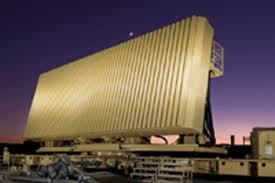Seeking better protection against incoming enemy’s ballistic missiles and air-borne attacks launched by maverick terrorist organisations, India is to acquire the latest “x-band” radars that have an astonishing 4,600-km range to pick out missiles and airborne objects.
These will allow ground-based handlers to pick out even a six-inch-wide airborne object from that distance and give the option of retaliation. The long range spotting capacity will allow a reaction time that will be six times quicker than the present capacity of India. This will help ramp up the ballistic missile defence capabilities in this “missile-charged” neighbourhood with both China and Pakistan possessing missiles of varied ranges.
The new acquisition will bring cities like Beijing, large parts of South East Asia and also countries in the entire Middle East within India’s viewing range. Present Indian capability is the Swordfish radar that can spot objects from 600-800 km away, which is under an upgrade to have a 1,500-km range. This is essentially a derivative of the Israeli Green pine radar that is now produced locally by the DRDO.
The use of long-range radars is immense as they can “acquire” or view a target and are capable of tracking it down, enabling the ground based operator to fire a counter missile and shot down the incoming enemy missile. India has already demonstrated technology to fire a missile and destroy an incoming missile at an altitude of 15 km above the earth and another test to take on the missile at a height of 48 km. The new powerful state-of-the-art technology x-band radar will be the best bet to tackle ICBMs in China’s arsenal, sources said while adding that the Chinese missile code-named ‘Dongfeng 31’, was a proven platform that can fire for 8,000 km. The Pakistani Hatf and Ghauri missiles, essentially hand-me-down versions of Chinese and North Korean missiles, are India-specific.
Each of the new x-band radars is expected to cost close to $600-700 million. Sources said only a one US company has produced such a long-range radar. Israel had requested the US to provide one and got it. This was to provide a defence against any perceived misadventure by Iran. Now India could either tie-up with the US or Israel.
BY : Tribune News Service




No comments:
Post a Comment